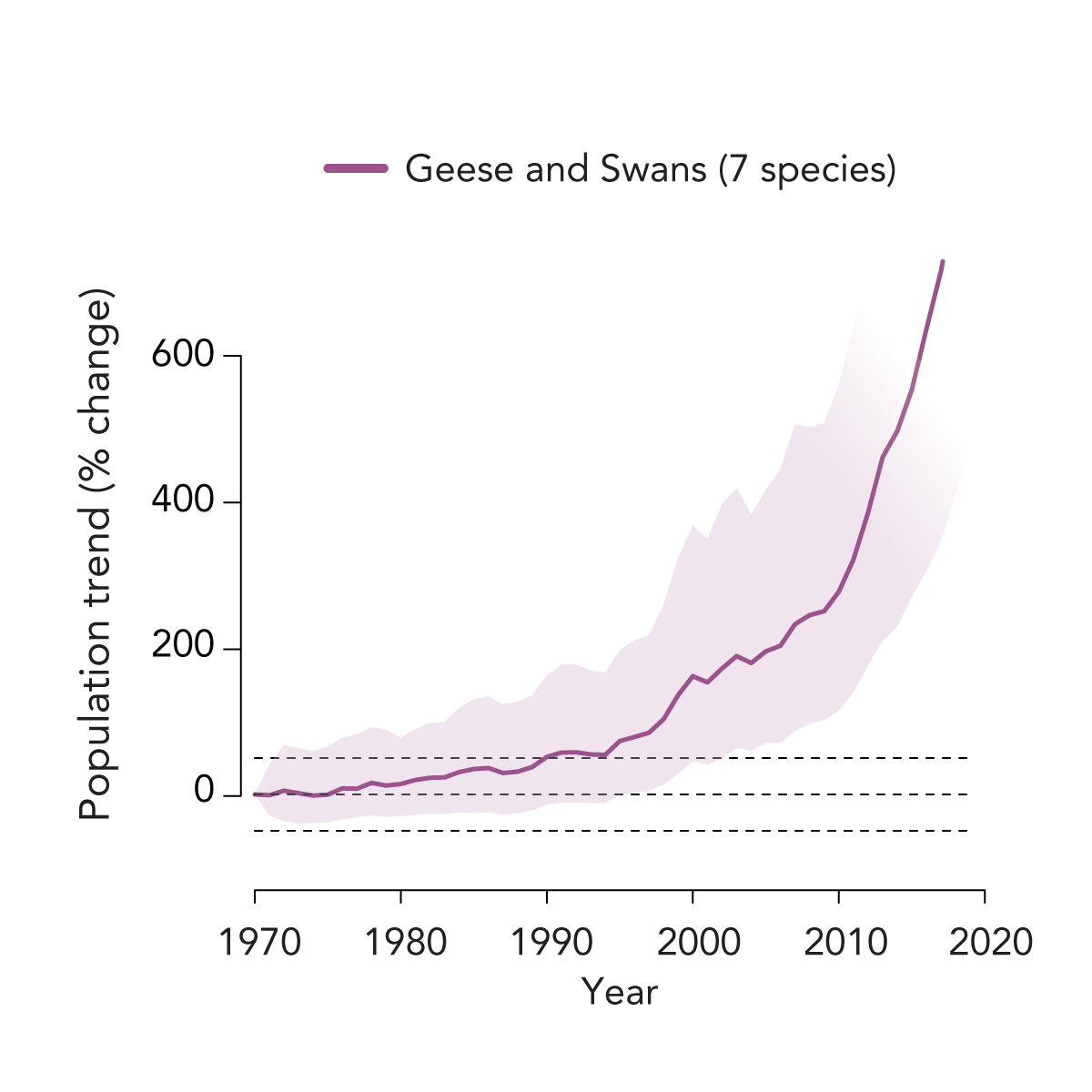Every few years, the North American Bird Conservation Initiative publishes a report on The State of the Birds [1]. This report is compiled by a coalition of “government agencies, private organizations, and bird initiatives led by NABCI (North American Bird Conservation Initiative)”.
The 2022 report shows that over the last 50 years, a few species have thrived, some have been conserved, and many others have declined dramatically in numbers cite [2]. The report identifies 90 species on “Alert”—species that are not currently protected that have lost 50% or more of their numbers in the last 50 years. Of these, 70 are tagged as at a “Tipping Point”—projected to lose another 50% in the coming 50 years.
The tipping point species are high priority targets for study, preservation, and conservation efforts.
For anyone who is paying attention, there is nothing surprising in this report. Birds compete with humans for living space and food resources, and it’s hardly an even competition. Humans are winning, taking over and modifying the surface of the planet, land and sea.
In addition, the last fifty years have seen an acceleration of global effects, including pollution and climate change. These have adverse effects on birds and habitats far removed from the original human sources.
The upshot is that wild birds are declining almost everywhere, due to multiple causes.
Humans have also had positive effects, especially through deliberate conservation efforts. Waterfowl have held their own, largely due to a long history of conservation. Other species of special interest to humans, such as condors and eagles, have survived and even recovered via extensive human intervention.
And then there is the wildest outlier in the dataset.

those damned geese!
I don’t know about you, but my area is overrun by “wild” geese, to the point that it is a serious nuisance. As the report indicates, geese are multiplying because they have adapted to humans. No kidding!
Even if we don’t care about birds in general, or specific endangered species (and I certainly care about birds, myself), they are very visible indicators of the overall health of the ecosystem. When the birds disappear, that means that plants, insects, microbes, and everything else are probably disappearing, too. Which is bad, because humans are eventually part of “everything else”.
Humans can take effective steps to save and bring back birds, which will improve life for “everything else”. The member organizations of NABCI are working to create and sustain efforts, i.e., these folks know how to do it. So, this report serves to identify high priority targets for new or larger programs.
(I’ll note that saving birds generally involves doing stuff that’s good for people, tough not necessarily good for short term profits.)
The bottom line is: The state of the birds is…totally in the hands of humans.
- North American Bird Conservation Initiative, The State of the Birds, United States of America, 2022. North American Bird Conservation Initiative, Ithaca, 2022. https://StateoftheBirds.org
- North American Bird Conservation Initiative, U.S. State of the Birds Report Reveals Widespread Losses of Birds in All Habitats–Except for One, in State of the Bidrds – Newsroom, October 12, 2022. https://www.stateofthebirds.org/2022/news-room/

One thought on “The State of the Birds (North America)”